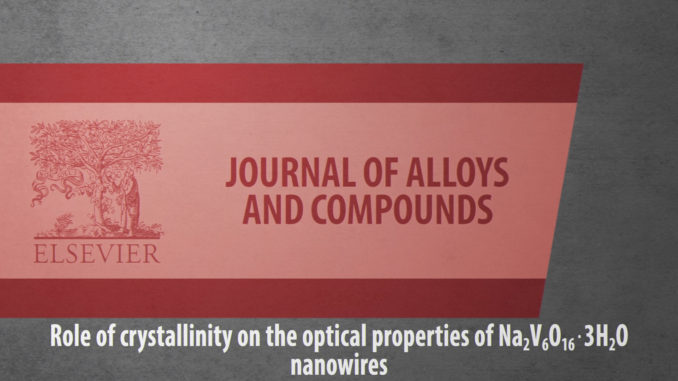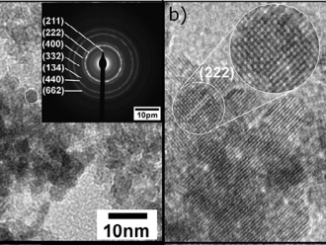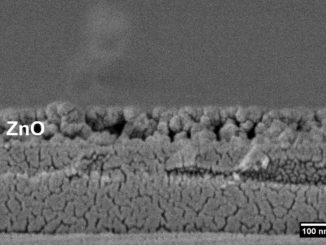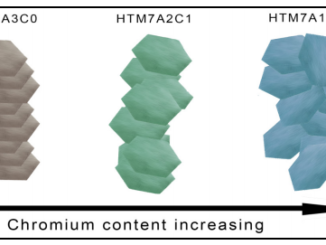
Role of crystallinity on the optical properties of Na2V6O16 center dot 3H(2)O nanowires
Abstract: It is known that optical properties depend on crystalline structures, feature that can significantly affect materials such as vanadates, since their lamellar structures tend to be irregular. Synthetic methods, such as hydrothermal annealing, may enhance the understanding of the dependence, once fine crystallization control is possible. Consequently, a monoclinic phase of Na2V6O16 center dot 3H(2)O 1D-nanostructures as nanowires has been obtained by decomposition of vanadium peroxide in hydrothermal conditions. X-ray diffraction (XRD), X-ray absorption spectroscopy (XAS) and high-resolution transmission electron microscopy (HRTEM) were employed to characterize the structure, local-order structure and morphology of the as-obtained samples. The optical and electronic properties of the samples were studied by photoluminescence (PL), UV-Visible diffuse reflectance (DRS) and electron paramagnetic resonance (EPR) spectroscopies. The nanostructures present a single crystalline nature and emit intense light at room temperature from 2.4 eV to 3.2 eV, i.e., from 520 nm to 390 nm, which is related to the crystalline nature of the samples. As the synthesis temperature increased, structural defects (V4+ centers) were reduced, and monocrystalline materials with improved PL from ultraviolet to green light emission could be obtained. (C) 2017 Elsevier B.V. All rights reserved.
Author(s): Avansi, W; Maia, LJQ; Mourao, HAJL; Ribeiro, C
JOURNAL OF ALLOYS AND COMPOUNDS
Volume: 731 Pages: 1119-1124 Published: JAN 15 2018
PDF: Role of crystallinity on the optical properties of Na2V6O16 center dot 3H(2)O nanowires
DOI: 10.1016/j.jallcom.2017.10.121




